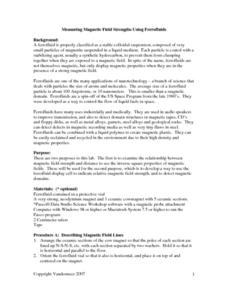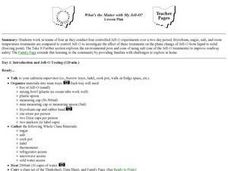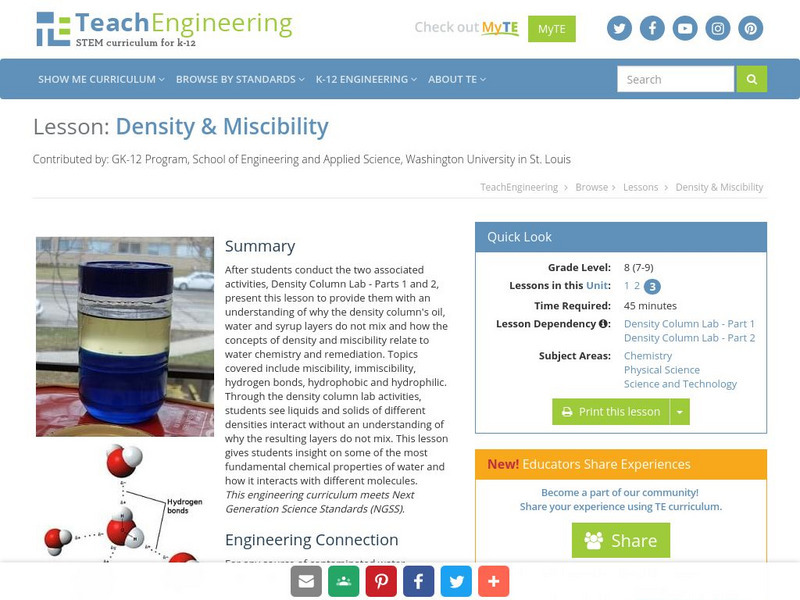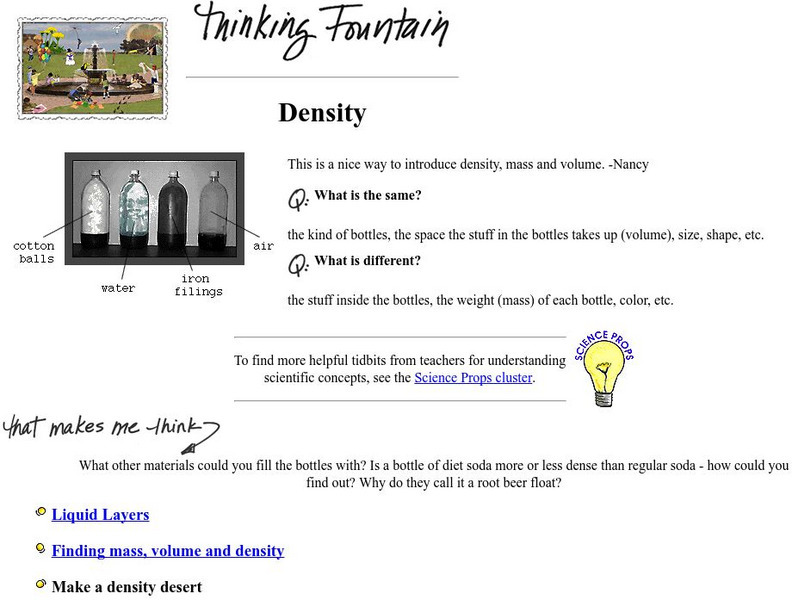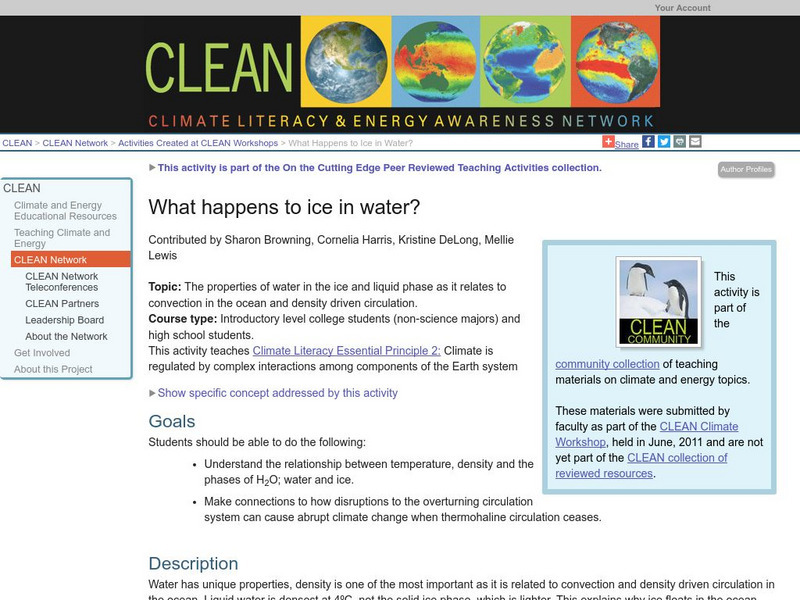Curated OER
Earth Science: The Structure of the Earth
Young scholars identify and complete activities about the structure of the Earth. In this Earth structure lesson plan, students view a Powerpoint about the Earth's layers and complete a diagram. young scholars compare temperatures in the...
Curated OER
Measuring Magnetic Field Strengths Using Ferrofluids
Students explore the field of nanotechnology by examining magnetic field strength in ferrofluids. They use probes attached to a computer program to determine the relationship between magnetic field strength and magnetic field lines.
Curated OER
Introduction to AP Chemistry
High schoolers are introduced to concepts in an AP Chemistry class. They work together to complete experiments on different materials. They discuss the results of the experiments.
Curated OER
Atoms, Kinetic Theory, Solids and Fluids
Students identify and describe the building blocks that make up an atom. They also compare the ages of atoms to the ages of the materials they compose,as well as, give examples that illustrate the small size of atoms.
Curated OER
Planet Structure & Interior
Students compare Jupiter and Earth. In this Earth and space studies lesson, students compare the composition of Earth and Jupiter and analyze how the composition affects the rate at which the planets spin.
Curated OER
What's the Matter with My Jell-o?
Learners work in teams of four as they conduct four controlled Jell-O experiments over a two-day period. The Family Page extends this learning to the community by providing families with challenges to explore at home.
Science Education Resource Center at Carleton College
Serc: Mn Step: Solid and Liquid Density Investigation
For this activity, students investigate whether objects and liquids float or sink when placed in water. As they proceed, they will develop an understanding of what density is. Student handouts are provided.
TeachEngineering
Teach Engineering: Density & Miscibility
After students conduct the two associated activities, Density Column Lab - Parts 1 and 2, present this lesson to provide them with an understanding of why the density column's oil, water and syrup layers do not mix and how the concepts...
Science Museum of Minnesota
Science Museum of Minnesota: Thinking Fountain: Density
An introduction to density, mass, and volume with links to related books and activities.
Other
The Science House: Daffy Densities
In this lab experiment, students will use 4 solids and 6 liquids to create colorful, layered rows demonstrating that less dense materials will float on top of the more dense materials.
Simon Fraser University
Chem1 Virtual Textbook: Densities of Substances and Materials
As part of a larger site called "Getting started in Chemistry," this site examines various topics related to the densities of substances and materials. Included in the study are properties of solids, liquids and gases, and how density is...
McREL International
Mc Rel: Whelmer #64 Learning Activity: Liquid Rainbow
An easy to do activity that investigates density and solubility. The activity is presented in lesson plan format that meets NSES standards.
Georgia Department of Education
Ga Virtual Learning: Fluids
In this interactive module you will be introduced to a unit on fluid dynamics. Learn how an object's density relates to its mass and volume by completing various activities and interactives.
Other
The Science House: Red, White, and Blue Ii
This colorful demonstration illustrates the rule, "likes dissolve likes," by combining three, immiscible liquids to create a density column." Teacher notes provide background information.
Exploratorium
Exploratorium: Science Snacks: Eyedropper Hydrometer
Deepen the students' understanding of density by constructing a simple hydrometer that can be used to compare the densities of different solutions.
Treehut
Suzy's World: How Come Some Liquids Don?t Mix?
This site from Suzy's World explores how and why certain liquids mix better than others. Content includes fun facts and a classroom experiment. This site also includes links to additional information on related subjects.
Climate Literacy
Clean: What Happens to Ice in Water?
Students investigate the properties of water in the ice and liquid phase as it relates to convection in the ocean and density driven circulation, and ultimately the climate.



